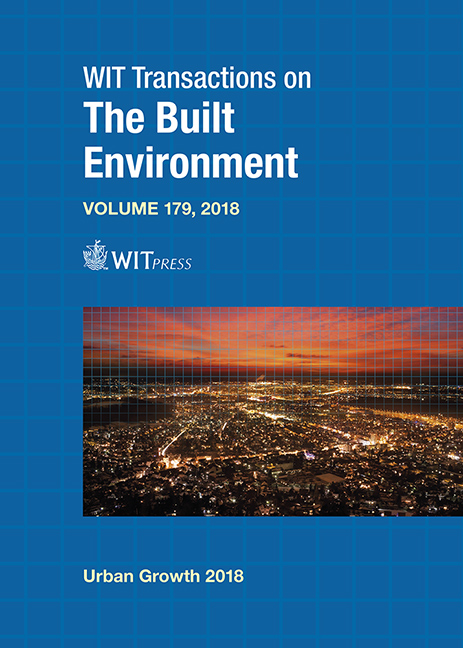INTEGRATIVE AND MODELING APPROACH TO SUSTAINABILITY MODES OF LIVING AND NEIGHBOURHOOD DEVELOPMENT
Price
Free (open access)
Transaction
Volume
179
Pages
13
Page Range
145 - 157
Published
2018
Size
327 kb
Paper DOI
10.2495/UG180141
Copyright
WIT Press
Author(s)
TSELISO MOROKE, CAREL SCHOEMAN, ILSE SCHOEMAN
Abstract
There exists a challenge in achieving equity within urban areas – urban neighbourhoods’ spatial and socio-economic inequalities remain considerably ambiguous in regard to urban form and quality of life. A point of departure in urban planning and development is sustainable development, as it has emerged as the principal expression and application of sustainability. It asserts its importance as the main topic of many international conferences. Notably, urban (spatial) planning and sustainable development dimensions need to dovetail their sustainability efforts for the transformation and integration of urban areas. In the interest of quality of life and urban form, from the technical assessment perspective, urban developments, (service) delivery strategies and accessibility generate parallel socio-economic benefits, enabling households and communities to improve their quality of living, and they are further linked to spatial planning processes. Spatial planning requires that sustainable modes of living, social services and economic opportunities be provided spatially in a manner that is rationally based on people’s needs and the access distance norms and standards. From this spatial planning perspective, the importance of adopting a measuring system is highlighted – it is difficult to achieve sustainable urban development without determining the degree of sustainability initiatives and/or sustainable modes of living. On this basis, this paper aims to use a model approved for evaluating low-income neighbourhoods’ sustainability in South Africa (Successful Neighbourhood Model (SNM)) to integrate strategies and to build the information and knowledge base from which the trajectories of different types of neighbourhoods can be assessed for quality of life. Thus, neighbourhood sustainability indicators are used as the main framework for the analysis in this study, and as a way of implementing SNM. The paper concludes by outlining the potential implementation opportunities/solutions that SNM can offer to achieve desired/satisfactory quality of life and to deliver support to capacitate local and national governments in the development and implementation of urban strategies and policies.
Keywords
neighbourhood, sustainability, quality of life, measurement





